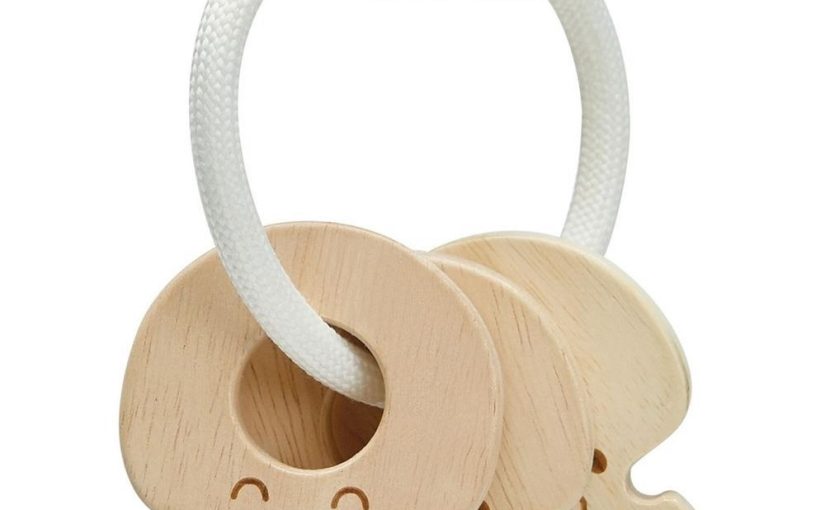The Benefits of Choosing Wooden Toys for Babies
Wood baby toys offer numerous advantages for babies. They are safe, sustainable, and support child development. Here are the key benefits of choosing wooden toys for your little one:
Natural and Eco-Friendly Materials
Wood baby toys are crafted from natural materials, avoiding harmful plastics and chemicals. These toys are sustainable and biodegradable, making them a better choice for the environment. By choosing wooden toys, you reduce waste and support eco-friendly practices.
Durability and Longevity
Wooden baby toys are sturdy and long-lasting. Unlike plastic toys, they resist breaking and wear over time. Families can pass down wooden toys from one generation to the next due to their durability. This makes them a cost-effective option for parents.
Timeless Aesthetic Appeal
The timeless design of wooden toys makes them attractive to both children and adults. They often feature simple, classic shapes that never go out of style. Wooden toys also look beautiful in nurseries or playrooms, adding charm to your baby’s surroundings.

Safety Advantages of Wooden Baby Toys
Wooden baby toys are a safe choice for your little one. Their natural materials and thoughtful design ensure safety and peace of mind during playtime.
Non-Toxic and Chemical-Free
Wood baby toys are free from harmful chemicals and toxins often found in plastic toys. Most wooden toys use natural finishes and paints that meet strict safety standards. This helps protect babies from exposure to dangerous substances. Parents can trust wooden toys for their baby’s safety, especially during teething.
Reduced Risk of Breakage and Sharp Edges
Wooden toys are sturdy and durable, making them less likely to break during use. Unlike plastic toys, they don’t easily produce sharp edges or small parts when damaged. This minimizes choking hazards and injuries. Their solid construction ensures safer handling by curious babies.
Encouragement of Safe Playtime Practices
Wooden toys promote gentle play due to their simplicity and design. They often lack complicated mechanisms that could harm little fingers. Babies learn to interact with these toys safely, gaining independence in their play. As a result, parents can relax knowing their child is using safe, well-crafted items.
Wooden Toys vs. Plastic Toys: Key Differences
Wooden toys and plastic toys differ greatly in safety, durability, and environmental impact. Understanding these key differences can help parents make informed choices for their children.
Chemical Composition and Safety
Wooden toys are made with natural materials, avoiding harmful chemicals often found in plastic toys. They are free from toxins and use safe, eco-friendly paints or finishes that meet strict safety standards. Plastic toys can contain phthalates, BPA, or other dangerous substances that may risk a child’s health. With wooden toys, parents can ensure safer play experiences for their babies.
Longevity and Maintenance
Wood baby toys are sturdy, resisting wear and tear over time. They are less likely to break during play, making them long-lasting. Families often pass wooden toys down through generations without diminishing their quality. Plastic toys, while lighter, are prone to damage and may require frequent replacement. Wooden toys also need less maintenance—simple cleaning and proper care keep them in excellent condition.
Environmental Impact
Wooden toys are biodegradable and sustainable, reducing waste over time. They are crafted from renewable materials, supporting eco-friendly practices. Plastic toys contribute to pollution due to their non-biodegradable nature. The production of plastic items involves harmful environmental processes, while wooden toys align with green solutions. Choosing wooden over plastic is a decision that aids environmental conservation and reduces carbon footprints.
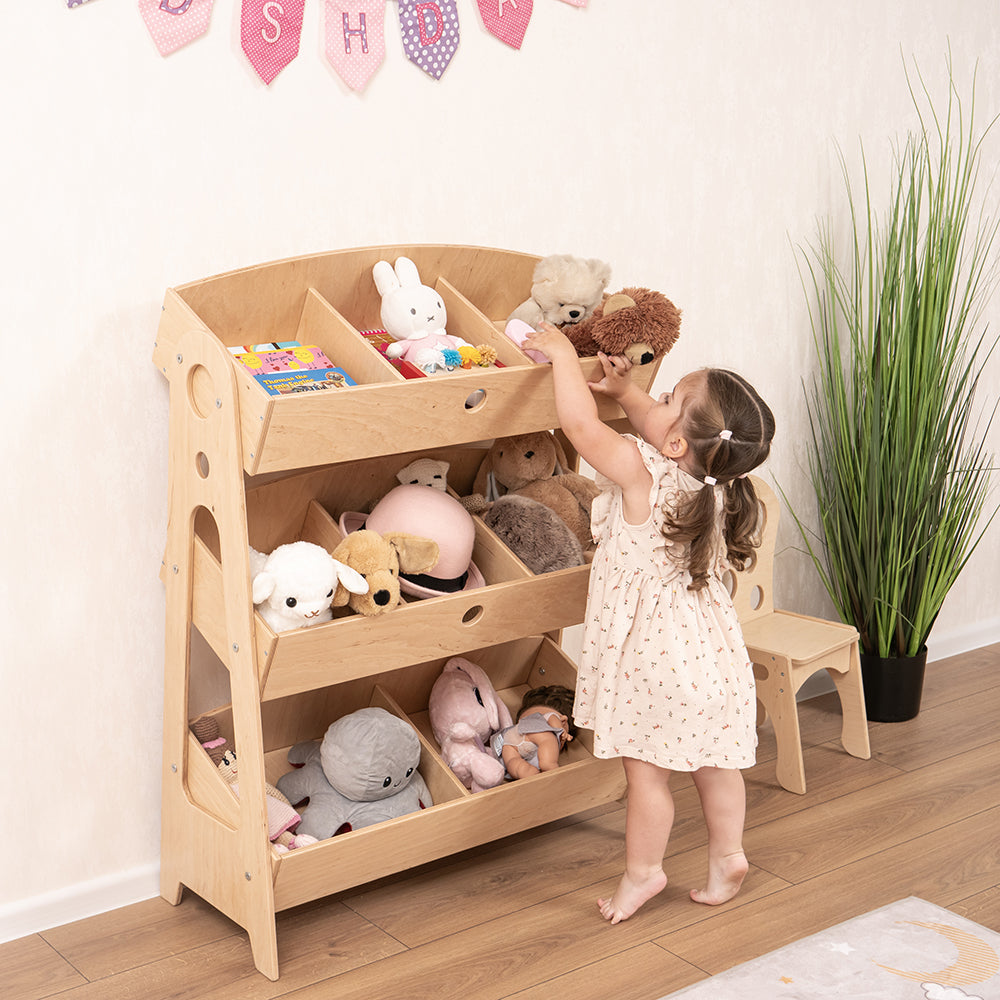
Encouraging Development with Wooden Baby Toys
Wooden baby toys don’t just offer safety and sustainability—they also foster essential developmental skills in babies. Their simplicity and thoughtful design encourage healthy learning and play processes during early childhood.
Stimulating Cognitive and Motor Skills
Wood baby toys are excellent for promoting cognitive and motor skill development. Toys like wooden blocks help babies recognize shapes, colors, and patterns, boosting problem-solving abilities. Activities like stacking blocks improve hand-eye coordination and fine motor skills. Sliding, pushing, or grasping wooden toys allows babies to strengthen their grip and refine movement precision.
Promoting Imaginative Play
Wooden toys inspire imaginative play due to their minimalistic structures. Unlike electronic toys, which dictate play styles, wooden toys let babies create their own scenarios. For example, a simple wooden puzzle can become part of a story or game. This freedom boosts creativity and fuels independent thinking. Toys such as wooden trains or figurines encourage roleplay and storytelling, nurturing imagination and emotional engagement.
Limiting Overstimulation Compared to Electronic Toys
Wood baby toys offer quiet and interactive play, minimizing overstimulation from lights and sounds. Electronic toys can overwhelm babies with excessive stimuli, compromising focus and calmness. Wooden toys create calming environments that encourage natural exploration. Their simplicity helps babies engage fully, staying focused longer and enjoying the learning process.
Popular Types of Wooden Baby Toys
Wood baby toys come in various forms, each designed to entertain and educate. Below are some popular options that combine safety, durability, and developmental benefits.
Wooden Blocks and Building Sets
Wooden blocks and building sets are timeless toys for babies. These sets introduce basic geometry and problem-solving skills. Babies can stack, arrange, and balance blocks, improving hand-eye coordination and motor skills. Building sets often come in different shapes and colors, enhancing early shape and color recognition. They foster creativity by allowing endless construction possibilities, making them a great choice for imaginative play.
Wooden Rattles and Teething Toys
Wooden rattles and teething toys are perfect for soothing and entertaining little ones. Made with smooth, natural materials, these toys are safe for babies to chew on during teething. Rattles produce gentle sounds that stimulate auditory senses, while their simple design helps strengthen grip and hand movements. Many wooden teething toys are crafted with non-toxic finishes, ensuring safety for babies who place them in their mouths.
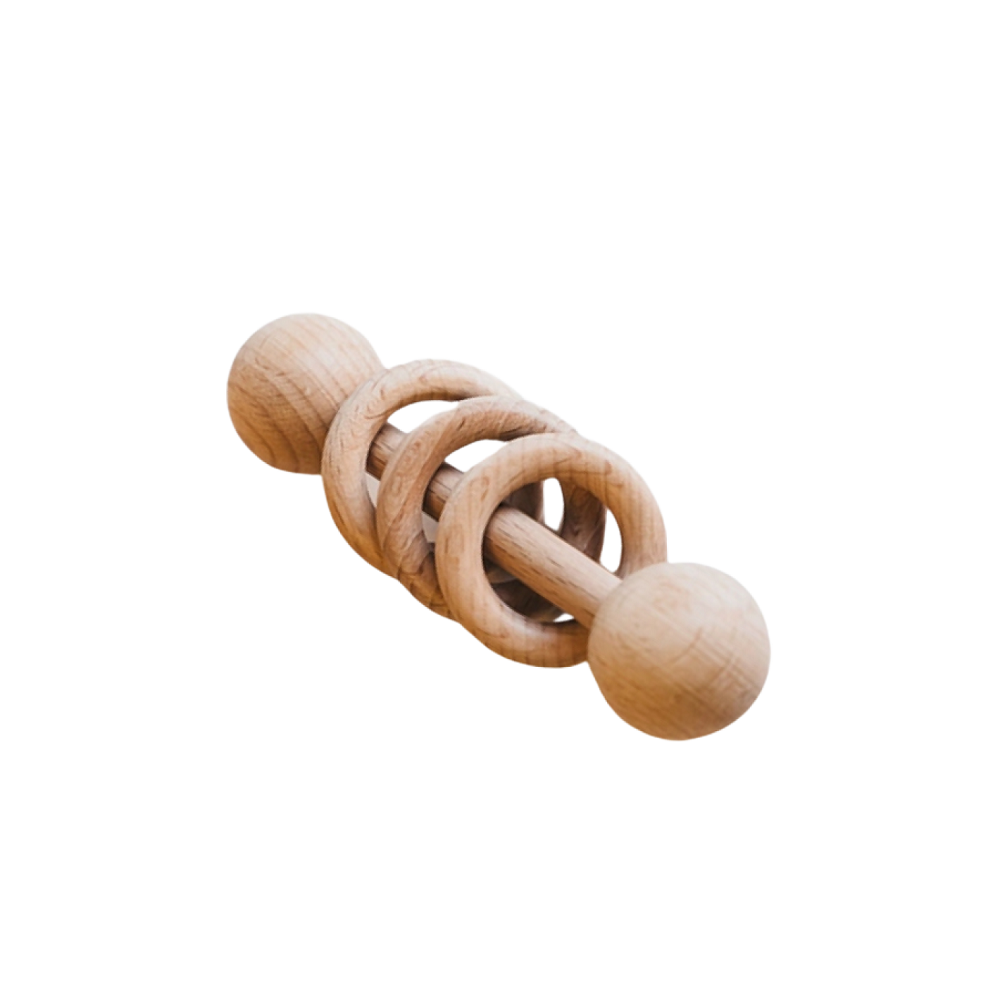
Wooden Puzzles and Shape Sorters
Wooden puzzles and shape sorters encourage problem-solving and fine motor development in babies. These toys challenge babies to fit pieces into specific spaces, improving cognitive skills and spatial awareness. Wooden puzzles often incorporate simple designs like animals or vehicles, engaging a child’s curiosity. Shape sorters, on the other hand, help children recognize basic shapes and practice matching skills, offering a fun and educational experience.
How to Care for and Maintain Wooden Baby Toys
Taking care of wood baby toys ensures their longevity and safety for your child. Proper care prevents damage and maintains their natural beauty. Below are practical tips to help you keep wooden toys in excellent condition.
Cleaning and Sanitizing Tips
- Use a damp cloth with mild soap to clean wooden toys. Avoid soaking them in water.
- Regularly wipe down toys to remove dirt and bacteria. This keeps them hygienic for play.
- Disinfect with a vinegar-water solution or a non-toxic cleaner approved for wooden surfaces.
- Let the toys air dry completely after cleaning to prevent warping or mold growth.
Protection Against Moisture and Damage
- Keep wooden toys away from prolonged exposure to water or moisture. Wet wood can swell or crack.
- Store toys in a dry environment to avoid humidity-related damage. Moisture weakens wooden surfaces.
- Apply a natural oil finish, such as coconut oil, to nourish and protect the wood.
- Prevent scratches and dents by avoiding hard impacts or rough play with the toys.
Proper Storage for Longevity
- Store wooden toys in a box or shelf to protect them from dust and direct sunlight.
- Keep toys in a cool, dry area to maintain their natural shape and color.
- Organize smaller toys in compartments to prevent accidental damage during storage.
- Check toys periodically for signs of wear or damage. Early fixes ensure long-lasting use.
By cleaning, protecting, and storing wood baby toys correctly, you preserve their quality for years of joy.
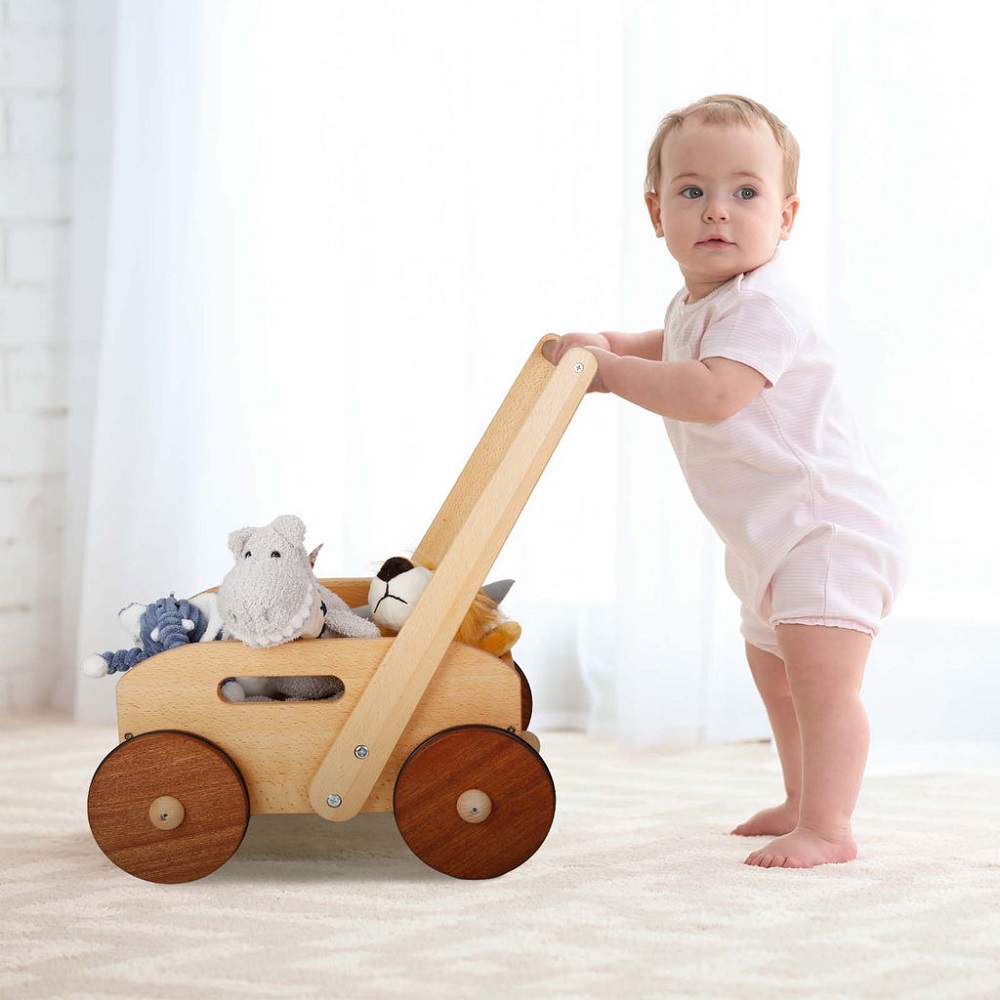
Tips for Choosing the Best Wooden Toys for Your Baby
Selecting the perfect wood baby toys ensures safety, sustainability, and engagement during playtime. Follow these tips to make informed choices:
Checking for Certifications and Safety Standards
- Look for toys with safety certifications like ASTM, EN71, or CE marks.
- Ensure the toys use non-toxic paints and finishes free from harmful chemicals.
- Avoid toys with small parts that can pose choking hazards for infants.
- Check for smooth edges and well-finished surfaces to prevent cuts or scrapes.
Selecting Age-Appropriate Designs
- Choose toys suited to your baby’s age and developmental stage.
- Infants enjoy simple rattles or teething rings for sensory development.
- For toddlers, pick blocks or puzzles that foster motor skills and problem-solving.
- Avoid overly complex toys that may frustrate younger children.
Supporting Sustainable and Ethical Brands
- Opt for brands committed to eco-friendly practices and sustainable sourcing.
- Select toys made from FSC-certified wood to ensure materials are responsibly harvested.
- Look for companies that use ethical labor and contribute to community welfare.
- Supporting such brands encourages long-term sustainability and environmental responsibility.
Inspiring Creativity through Wooden Toys
Wood baby toys are not just tools for play; they are gateways to a world of creativity and imagination. Unlike many electronic toys that offer limited interaction, wooden toys encourage open-ended play, allowing children to invent their own games and storylines. This type of play is invaluable for developing problem-solving skills and innovative thinking.
Encouraging Imaginative Scenarios
For example, a simple set of wooden blocks can inspire endless possibilities. Children can stack them to build towering structures, create intricate designs, or even use them as props in imaginative play scenarios. A toddler playing with a wooden train set can invent stories about journeys and adventures, exploring their creativity while actively engaging with the toy.
The tactile nature of wooden toys also enhances imaginative play. The weight and texture of wood offer a sensory experience that stimulates curiosity. When children manipulate wooden toys, they explore cause and effect, balance, and gravity. Encouraging this type of imaginative engagement helps foster cognitive development and emotional expression, as children learn to articulate their thoughts and ideas through play.
Integrating Learning with Fun
Many wooden toys are designed with learning in mind. Educational toys, such as sorting games, shape recognizers, and alphabet blocks, blend play and learning seamlessly. Through interaction with these toys, toddlers can master important concepts while having fun. For example, using shape-sorters teaches toddlers about geometric shapes, enhancing their recognition skills and spatial awareness.
These learning experiences extend beyond just cognitive skills. They also nurture social skills as children engage with peers, sharing toys and collaborating in games. Parents can facilitate group play by providing multiple wooden toys that encourage teamwork. This social interaction adds another layer of development, proving that wooden toys are not only entertaining but also enriching for young minds.
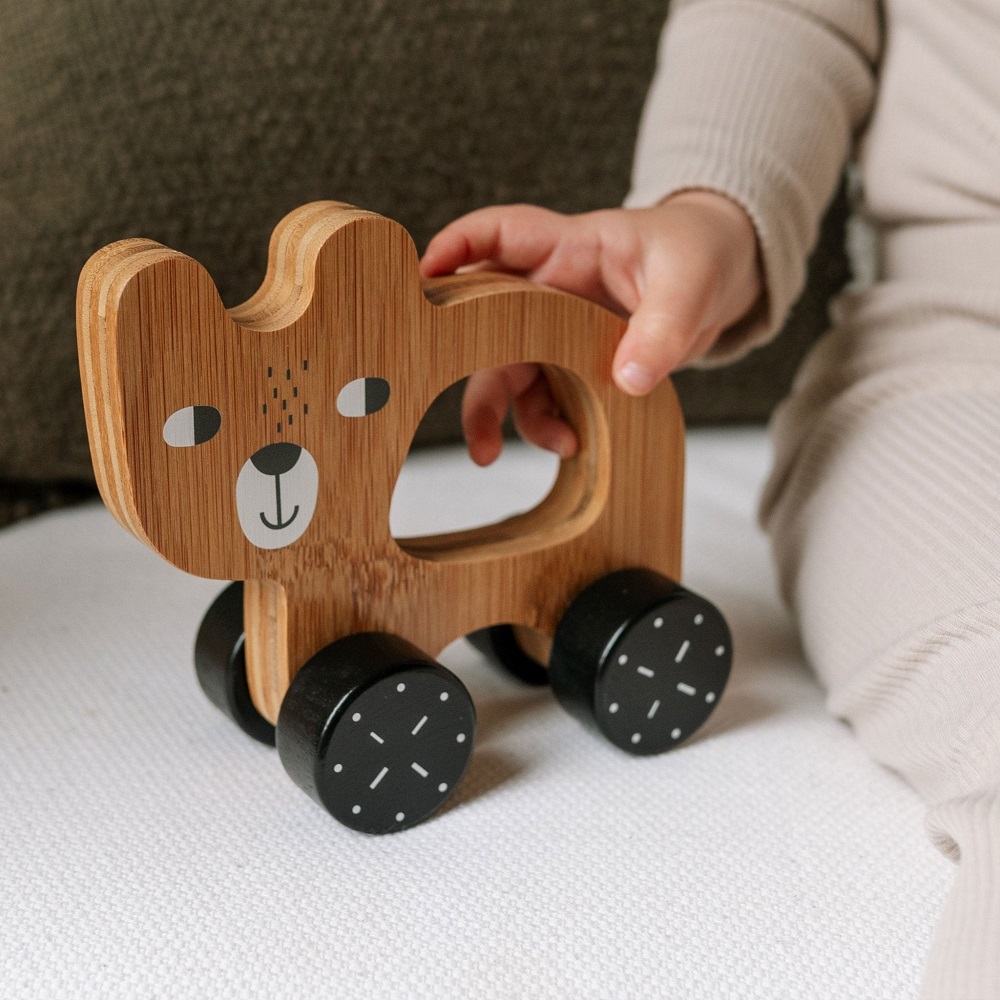
The Emotional Connection with Wooden Toys
The wood baby toys you choose can create lasting emotional connections for your child. These toys often serve as more than just playthings; they can become companions, fostering comfort and security during various stages of childhood.
Building Trust and Comfort
Children develop attachments to specific toys that provide comfort and reassurance. A well-loved wooden toy can become a source of solace during times of stress or change. For instance, a cuddly wooden animal or a favorite train can help a toddler feel secure in unfamiliar situations, such as a new environment or when meeting new people.
By providing a consistent and familiar presence, wooden toys support emotional development. This connection can encourage toddlers to explore their feelings and express themselves. As they interact with their toys, children learn about empathy, nurturing, and companionship, which are vital elements of emotional intelligence.
Passing Down Wooden Toys
One of the unique aspects of wooden toys is their durability, which allows them to be passed down through generations. A sturdy wooden toy can become a family heirloom, holding sentimental value for years to come. Passing down a beloved toy connects the family through shared experiences.
Imagine a child receiving a wooden toy that once belonged to an older sibling. The new child can build their own memories while cherishing the connection to their sibling’s childhood. This sense of legacy fosters a family bond that lasts beyond the present moment, enriching the family’s shared history.
Making Informed Choices for Your Toddler
In conclusion, wood baby toys represent a wonderful option for nurturing and enriching your toddler’s growth. Their safety, durability, and developmental benefits provide a comprehensive play experience. By choosing high-quality wooden toys, parents can help cultivate creativity, confidence, and social skills in their children.
Your Role as a Parent
As a parent, it is essential to be an active participant in your child’s play experiences. Selecting wood baby toys that align with your values supports their development while encouraging exploration and learning. Fostering a rich environment of creativity and learning will yield long-term benefits for your child that extend far beyond playtime.
Ultimately, investing in wood baby toys is an investment in your child’s future. These toys not only spark joy but also create pathways for growth, connection, and understanding. Embrace the beauty and benefits of wooden toys, and watch your child blossom through the power of play. With every interaction, you provide a solid foundation for lifelong learning, creativity, and emotional resilience.
